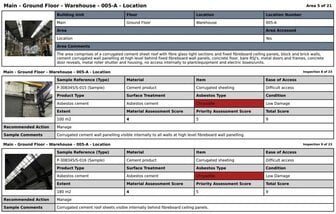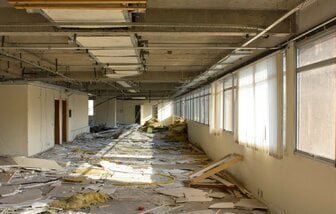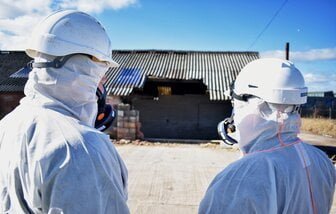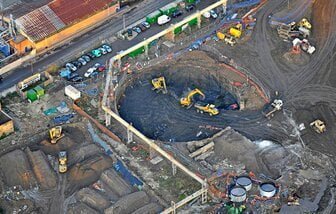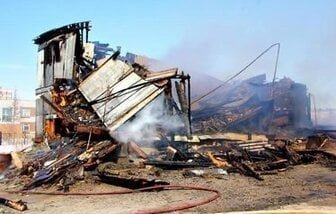What is an Asbestos Management Plan?
An asbestos management plan is essential for managing asbestos-containing materials (ACMs) in buildings. It aims to protect occupants and workers from asbestos exposure through identification, assessment, and control of ACMs. Key components include an asbestos survey, risk assessment, and strategies for monitoring and emergency response. Compliance with local, state, and legal regulations is critical to avoid legal consequences and ensure safety. Regular updates and staff training are necessary to maintain an effective plan.
Understanding and Creating an Effective Asbestos Management Plan
An asbestos management plan is a comprehensive document designed to manage asbestos-containing materials (ACMs) within buildings, aiming to protect occupants and workers from asbestos exposure.
Asbestos, a hazardous material known for its fire-resistant properties, was widely used in construction before its dangers were fully understood. The presence of ACMs in buildings necessitates a formalised approach to ensure safety and regulatory compliance.
The primary objective of an asbestos management plan is to outline procedures for identifying, assessing, and controlling the risks associated with ACMs.
Central to this plan is an asbestos survey, which involves a thorough inspection of the building to locate and document the presence of asbestos. Following the survey, a risk assessment is conducted to evaluate the potential hazards posed by the identified ACMs, considering factors such as the condition of the material and its likelihood of disturbance.
Based on the risk assessment, the asbestos management plan delineates strategies for monitoring and controlling asbestos. These strategies may include regular inspections, maintenance protocols, and safe work practices to minimise the disturbance of ACMs.
Additionally, the plan defines emergency response procedures in case of accidental asbestos release, ensuring prompt and effective action to mitigate exposure risks.
Another critical aspect of an asbestos management plan is ensuring compliance with local, state, and federal regulations related to asbestos management.
Regulatory frameworks vary by jurisdiction, but they generally mandate specific requirements for the identification, handling, and disposal of asbestos. The plan serves as a guiding document to navigate these regulatory landscapes, helping building owners and managers adhere to legal obligations and avoid potential penalties.
In summary, an asbestos management plan is essential for safeguarding the health and safety of building occupants and workers. By systematically addressing the presence of ACMs and implementing robust control measures, the plan not only mitigates exposure risks but also ensures regulatory compliance, fostering a safe and compliant building environment.
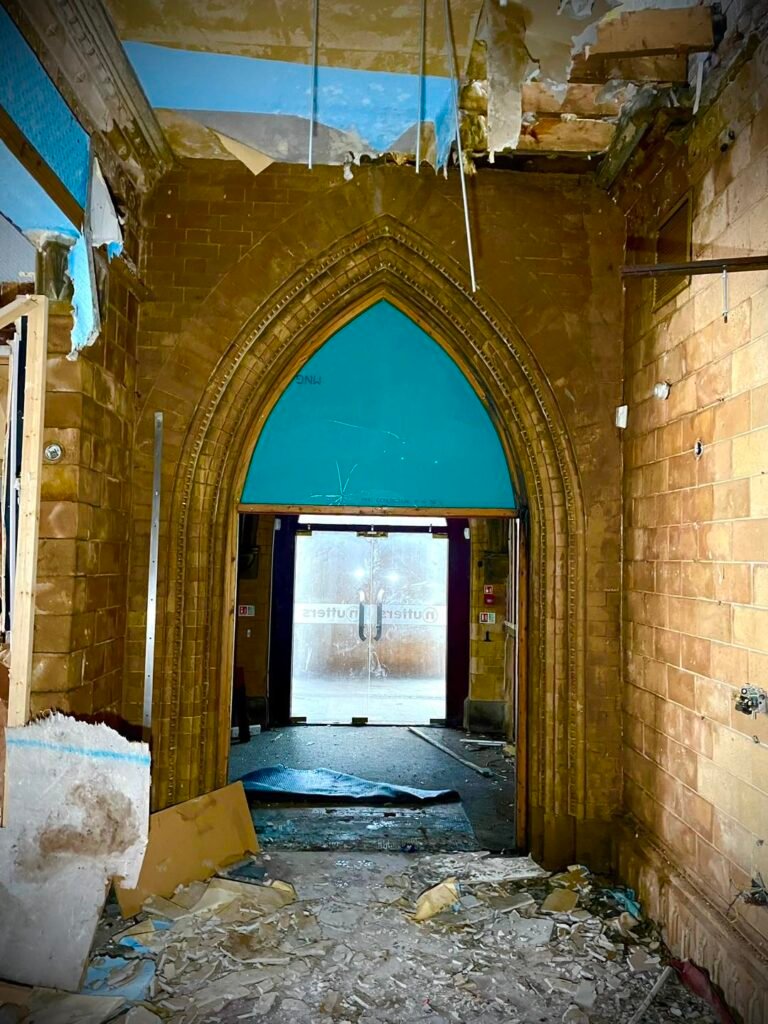
Creating an effective asbestos management plan is crucial for ensuring the safety and health of building occupants and staff. The first step in this process is conducting a comprehensive asbestos survey. This survey must be performed by certified professionals who can accurately identify Asbestos-Containing Materials (ACMs) within the building. Engaging experts ensures that the survey is thorough and compliant with regulatory standards.
Once the survey is complete, the next phase involves identifying and assessing the condition of the ACMs. This step is critical in determining the potential risk posed by the asbestos materials. Professionals will evaluate factors such as the type, location, and condition of the ACMs, noting any damage or deterioration. Areas where ACMs are found should be prioritised based on the level of risk they present.
Following the assessment, a detailed risk assessment should be developed. This assessment will help in prioritizing areas of concern, enabling you to focus your resources on the most critical issues first. The risk assessment should categorize the identified ACMs based on the likelihood of disturbance and the potential for fiber release. High-risk areas may require immediate action, while lower-risk areas might be managed through regular monitoring.
Documenting the findings of the survey and risk assessment is essential. This documentation should include detailed descriptions of the ACMs, their locations, and the results of the risk assessment. This record will serve as a reference for future inspections and actions. Additionally, it provides a basis for creating an action plan for managing or removing asbestos.
Creating an action plan involves deciding on the appropriate control measures for the identified ACMs. These measures can range from encapsulation and enclosure to full removal of the asbestos materials. The action plan should also establish procedures for regular monitoring and re-evaluation to ensure that the ACMs remain in a safe condition over time.
Clear communication is vital in the management plan. Building occupants and staff should be informed about the presence of ACMs, the risks involved, and the actions being taken to manage or remove the asbestos. Providing regular updates and making sure that everyone understands their role in maintaining safety can significantly enhance the effectiveness of the asbestos management plan.
An asbestos management plan is essential primarily because of the severe health risks posed by asbestos exposure. Asbestos, a once-popular construction material, is now known to be a significant health hazard. Prolonged exposure can lead to serious diseases such as mesothelioma, lung cancer, and asbestosis. These conditions not only compromise the health and well-being of individuals but also result in substantial medical expenses and emotional distress.
In addition to the health implications, there are stringent legal obligations for building owners and managers to manage asbestos responsibly. Regulatory agencies mandate the identification, assessment, and control of asbestos-containing materials (ACMs) in buildings. Failure to comply with these regulations can result in hefty fines and legal consequences, tarnishing the reputation of the responsible parties. By having a comprehensive asbestos management plan, building owners can ensure they meet all legal requirements and avoid these serious repercussions.
Moreover, a proactive asbestos management plan can offer significant financial benefits. Effective management of asbestos can reduce liability and lower costs associated with emergency asbestos removal. Addressing asbestos issues before they become emergencies can prevent costly shutdowns and repairs, ultimately saving money in the long run. This forward-thinking approach not only safeguards financial resources but also ensures that any necessary asbestos remediation is handled in a controlled and cost-effective manner.
Finally, and most importantly, an asbestos management plan is crucial for protecting the health and safety of building occupants and workers. By identifying and managing asbestos risks, building owners can create a safer environment, minimizing the chances of asbestos exposure. This commitment to safety fosters trust and reassurance among occupants and employees, enhancing overall satisfaction and productivity.
Maintaining and updating an Asbestos Management Plan (AMP) is a critical ongoing responsibility that ensures the safety of building occupants and compliance with regulatory standards. Regularly scheduled inspections and monitoring are essential components of this process. These inspections should be conducted by qualified professionals who can accurately assess the condition of Asbestos-Containing Materials (ACMs). By doing so, any deterioration or damage to ACMs can be promptly identified and addressed, thereby mitigating potential health risks.
Any changes in the building structure, such as renovations or modifications, necessitate updates to the AMP. These changes could impact the location and condition of existing ACMs, requiring a reassessment to ensure that all ACMs are appropriately managed. Additionally, if ACMs are removed, the AMP must be updated to reflect these changes. This ensures that the plan remains an accurate and reliable resource for managing asbestos-related risks within the building.
Continuous training and education for building staff and maintenance workers are also crucial. These individuals should be well-informed about asbestos safety practices, including the identification of ACMs and the procedures for handling them safely. Regular training sessions can help maintain a high level of awareness and preparedness, which is vital for the effective implementation of the AMP.
Keeping detailed records of all inspections, actions taken, and updates made to the AMP is essential for compliance and accountability. Documentation should include the dates of inspections, the findings, any remedial actions taken, and the results of those actions. This record-keeping not only helps in tracking the effectiveness of the AMP but also provides evidence of compliance with regulatory requirements.
In summary, maintaining and updating an Asbestos Management Plan involves regular inspections, timely updates following structural changes or ACM removal, continuous education for staff, and meticulous record-keeping. These practices ensure that the AMP remains effective in managing asbestos-related risks and safeguarding the health of building occupants.
Asbestos in Homes
Learn about the risks of asbestos, a hazardous material commonly found in homes. This guide covers the health dangers of asbestos exposure, including asbestosis, lung cancer, and mesothelioma, and provides essential information on proper handling, safety precautions, and professional asbestos removal to safeguard your health and home
What is a Asbestos Surveys
Learn about the different types of asbestos surveys conducted in the UK, including asbestos management surveys, asbestos refurbishment and demolition surveys, and asbestos reinspection surveys. Find out why these surveys are crucial for identifying and managing the presence of asbestos in buildings, and how they ensure the safety.
What is a Pre-Demolition Survey?
A pre-demolition survey is an essential step in any demolition project. By conducting a thorough assessment of the building or structure, potential hazards can be identified and appropriate measures can be taken to ensure a safe and efficient demolition
Refurbishment Survey
A refurbishment survey is a critical step in the refurbishment process in the UK. It helps to identify and manage the risks associated with asbestos-containing materials, ensuring the safety of workers and occupants. By engaging a qualified surveyor to conduct the survey, duty holders
Asbestos Removal
Total Asbestos is a leading asbestos removal company in the UK, offering comprehensive services including surveys, testing, and removal. With a focus on safety, regulatory compliance, and cutting-edge technology, they manage projects across residential, commercial, industrial, and public sectors.
Types of Asbestos
Asbestos has been included in many materials in the last 150 years. Three common types of asbestos can be found in buildings: Crocidolite (Blue Asbestos), Amosite (Brown Asbestos), Chrysotile (White Asbestos)
Managing Asbestos
The strategy of the HSE is to ensure that those involved in the repair, removal or disturbance of asbestos containing materials (ACMs), such as insulation coatings or insulation boards, are licensed & competent
What is Asbestos and why its so dangerous ?
Asbestos was commonly used as a construction material in the UK between the 1950s and 1980s in particular. If your home was built between these years, chances are that you are living with Asbestos
Control Of Asbestos Regulations 2012
The control of asbestos regulation 2012 came into force on 6 April 2012. In practice the changes are fairly limited. They mean that some types of non-licensed work with asbestos now have additional requirements, i.e. notification of work, medical surveillance and record keeping.
Asbestos In The Workplace
Learn about asbestos, its types, and the health risks associated with exposure. Understand the importance of managing asbestos in the workplace, the UK’s Control of Asbestos Regulations 2012, and the role of the Health and Safety Executive (HSE) in enforcing these regulations. Discover the safety measures necessary to protect workers
Brownfield Land Remediation Contractors
We have tackled some of the most complex remediation projects undertaken in the United Kingdom, surpassing industry standards. Our diverse range of experience and expertise sets us apart and we continually deliver to the highest standards
Total Asbestos Consultancy
Total Asbestos stands as a premier provider of comprehensive asbestos consultancy services across the UK. Renowned for their expertise and unwavering commitment to safety, Total Asbestos offers a wide array of services designed to address the multifaceted challenges posed by asbestos.
Let's Work Together
Please complete the form below and someone from the Total team will be in touch to discuss your asbestos requirements For urgent needs, our customer support team is available through various channels. You can reach us via phone during business hours, or through our dedicated email support. We are committed to providing timely assistance and ensuring your asbestos concerns are addressed promptly and professionally.


